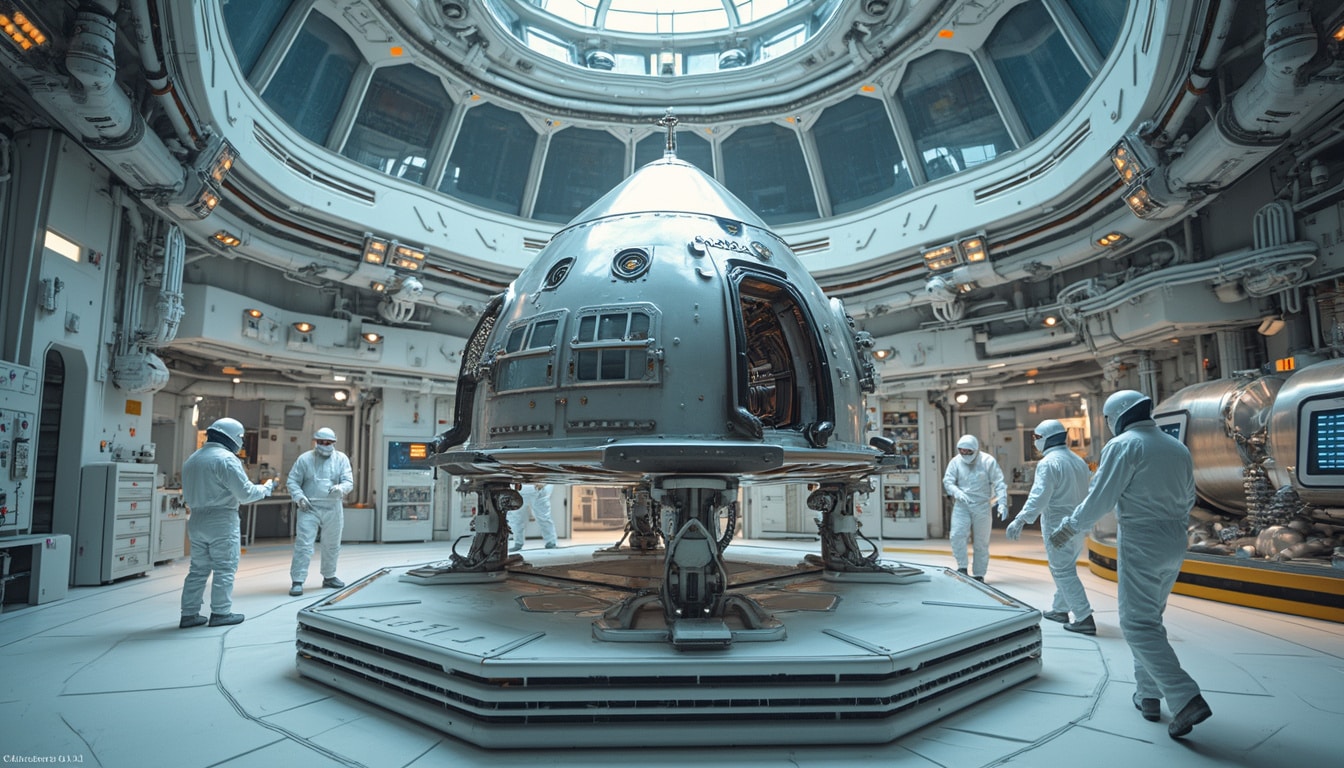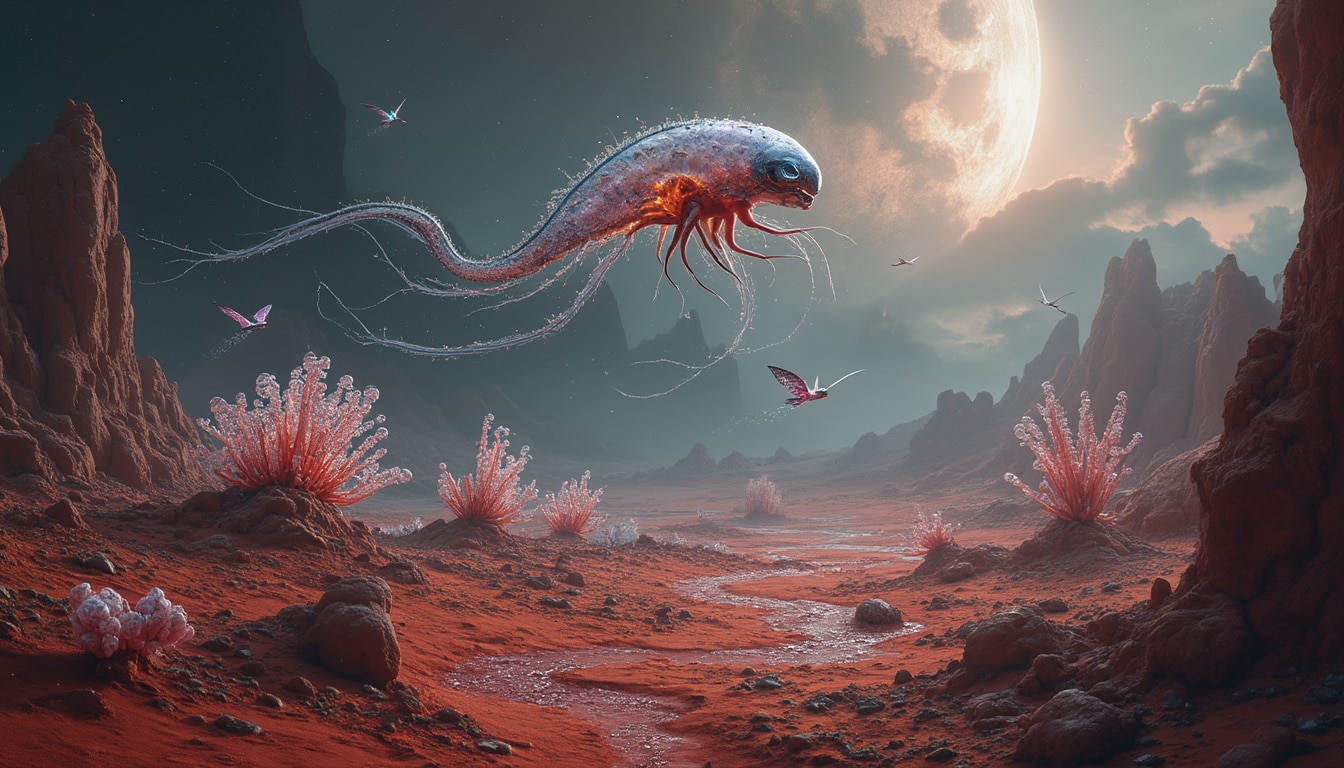The discovery of new microbial life forms in the most unexpected places continues to astound researchers. A recent study has unveiled the existence of 26 previously unknown bacteria in NASA’s clean rooms, environments meticulously designed to prevent contamination of spacecraft. This groundbreaking research, conducted by a collaborative team of scientists from NASA’s Jet Propulsion Laboratory and partners in India and Saudi Arabia, reveals not only the resilience of these microbes but also their potential implications for space exploration and biotechnology. These discoveries ignite questions about the adaptability of life and its possible role in extraterrestrial environments.
The NASA Cleanrooms: Designed to be Contaminant-Free
NASA’s cleanrooms serve as crucial hubs in space mission preparation, where spacecraft undergo final assembly and testing before their launch into the cosmos. These controlled environments are designed to maintain strict cleanliness standards to ensure no terrestrial microbes accompany the spacecraft on their journeys. However, the recent findings of 26 novel bacterial species challenge the notion of absolute sterility in even the most meticulously maintained facilities.

A Glimpse into the Discovery Process
The recent study began when scientists targeted the cleanroom of the Phoenix Mars lander, which was prepared for its 2007 mission to Mars. Scientists deployed cutting-edge genomic techniques to analyze samples collected from the Payload Hazardous Servicing Facility at NASA’s Kennedy Space Center. The results were astonishing: 53 strains identified as belonging to 26 new bacterial species. The nature of these bacteria suggests they possess extraordinary resilience, capable of surviving in harsh and extreme environments.
Extremophiles: Nature’s Survivors
Among the newly discovered bacterial species, many fall under the category of extremophiles—organisms that thrive in extreme conditions that would be lethal to most life forms. These bacteria exhibit remarkable characteristics that enable them to persist in environments that are highly acidic, saline, or even irradiated. Understanding their biology not only raises important questions about life on Earth but also aids research in astrobiology and microbial ecology.
Potential Applications in Biotechnology
The genetic analysis of these resilient bacteria revealed potential applications for biotechnology, particularly in developing new methods for preserving food, detoxifying environmental pollutants, and advancing medical treatments. For example, certain genes associated with DNA repair and detoxification processes highlight an avenue for bioengineering innovations aimed at environmental sustainability. As researchers delve deeper into these microbial genomes, the scope of potential applications in other industries, such as pharmaceuticals, continues to expand.
Impact on Space Exploration
The implications of discovering these novel microbes in NASA cleanrooms extend beyond Earth. As missions venture deeper into the cosmos, understanding the resilience of microbes becomes critical for future space exploration. There is a growing concern about the risks posed by microbes surviving in extraterrestrial environments and potentially contaminating other celestial bodies.
Safeguarding Against Contamination
One of the primary objectives of this research is to enhance NASA’s cleanroom protocols to reduce the risk of biological contamination during space missions. By better understanding the behavior and survival mechanisms of these extremophiles, scientists can implement strategies to mitigate unintentional colonization of other planets. This is particularly crucial as humanity prepares for future missions to Mars and beyond; the last thing we need is to carry Earth’s microbes to alien worlds, potentially impacting native ecosystems.
Innovative Strategies for Future Research
The innovative strategies employed in this research not only highlight the tenacity of life but also pave the way for further studies into microbial existence in extreme environments. As exploration continues, scientists may discover more organisms resilient to similar pressures and conditions as those found in space.

Collaboration Across Borders
This groundbreaking research is the result of collaboration between international teams. Scientists from NASA’s Jet Propulsion Laboratory (JPL), King Abdullah University of Science and Technology (KAUST) in Saudi Arabia, and researchers in India have come together to enhance our understanding of microbial life. Such collaborations showcase the global effort in advancing knowledge in the fields of science and technology. This international teamwork enhances access to various scientific methodologies, allowing researchers to leverage diverse expertise for deeper exploration into microbial resilience.
Further Explorations in Microbial Ecology
The journey does not stop here. Continued research into microbial ecology sheds light on how life can adapt in various environments and how these adaptations can inspire new technologies for Earth. Organizations continue to embrace innovation to develop new strategies for studying microbial behavior and using this knowledge to positively impact our world. As scientists take stock of the innovations revealed through this research, the possibilities for groundbreaking applications appear endless.
A Bright Future for Scientific Research
As discoveries continue to unfold, the implications for both scientific research and applications in our daily lives grow more profound. Enhanced understanding of microbial life can lead to tremendous breakthroughs in numerous fields including medicine, biotechnology, and environmental science. Additionally, future missions to space will benefit from advanced microbial management strategies, ultimately aiding humanity in our quest to explore the universe responsibly. With each new finding, we edge closer to unraveling the mysteries that encompass both life on Earth and beyond.
Reviewing the Impacts on Science and Society
The ramifications of this research are felt not only in scientific communities but also across society as we recognize the relationship between innovation and our understanding of life itself. The findings prompt discussions about the origin of life, the potential for extraterrestrial organisms, and the need for responsible exploration. In an era where space missions are on the rise, the realization of microbial survival brings forth ethical considerations and questions about our planetary responsibility.
| Microbe Species | Survival Mechanism | Potential Applications |
|---|---|---|
| Species A | Extreme Stress Tolerance | Bioremediation |
| Species B | DNA Repair Enzymes | Pharmaceutical Development |
| Species C | Toxins Detoxification | Food Preservation |
| Species D | Temperature Resilience | Bioengineering |
| Species E | Ionizing Radiation Resistance | Space Exploration |
In light of these discoveries, it is essential to foster a dialogue between scientists, policymakers, and the public to ensure that the exploration of space and the study of microbial life continue to broaden our understanding of existence. A careful balance must be struck between ambition in advancing science and the respect needed for other planetary ecosystems.




Leave a Reply